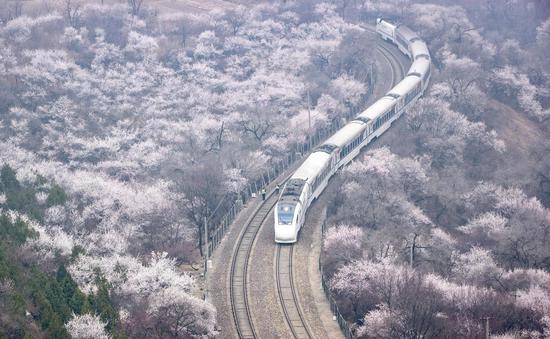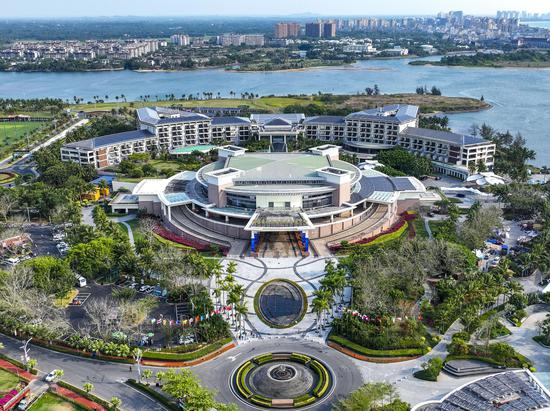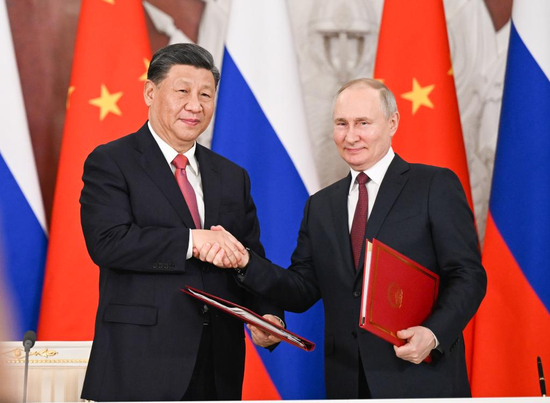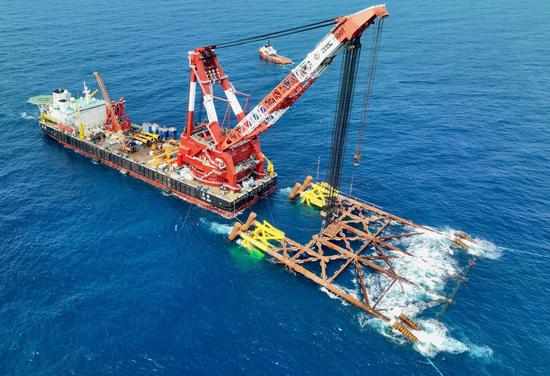
Employees of Xiamen Customs supervise a China Railway Express cargo train in the Xiamen free trade area, Fujian province, in September 2020. (Photo/China News Service)
During her trip to China in early March, Tourism Australia signed agreements with Chinese airlines, including Air China Ltd and China Eastern Airlines Corp Ltd, to boost recovery of travel between China and Australia.
China was Australia's largest source market for both international visitation and spending in 2019.Some 1.44 million Chinese residents traveled to Australia, making up 15 percent of all international arrivals in the country. In all, they spent around A$12.4 billion ($8.3 billion).
By offering more market access to global service providers, China will be able to offer consumers a wider range of options and improve the overall quality of services available, said Lin Meng, director of the Modern Supply Chain Research Institute, which is part of the Beijing-based Chinese Academy of International Trade and Economic Cooperation.
"As the educational level of young workforce continues to rise across China, the country's role in the global industrial chain is shifting from being a 'world factory' to a 'world office'," she said. This transformation, she said, could help businesses in fields like software design and modern logistics to create more jobs in China in the coming years.
Wu Dongming, CEO of DHL Express China, a German courier service provider, said the company will continue to invest on its logistics infrastructure in China and launch intercontinental cargo routes between major Chinese cities and other key global locations this year.
After putting its latest China gateway into operation in Wuxi, Jiangsu province, in January, DHL began expanding its Shenzhen gateway in Guangdong province. The primary objective of these projects is to offer local businesses quicker transit times and simplified access to global markets.
To boost its economy, China will further its efforts to attract and utilize more foreign investment this year, as outlined in this year's Government Work Report.
The report recommended several measures to achieve this goal, including expanding market access, opening up the modern services sector, ensuring national treatment and improving services for foreign-funded companies, and facilitating the launch of landmark foreign-funded projects.
To square up against domestic and foreign rivals, Cainiao Network, the logistics arm of Chinese e-commerce giant Alibaba Group Holding Ltd, has increased its overseas distribution centers to 15, with focus on last-mile deliveries and smart lockers.
Liu Xinyang, general manager of Cainiao Export Logistics, underlined the need to streamline and digitalize logistics capabilities and services as well as cross-border supply chains.
He said the COVID-19 pandemic has highlighted the importance of stable and efficient cross-border logistics as more merchants shift online to tap a wider overseas consumer base.
To date, Cainiao has set up six smart logistics hubs around the world. It operates more than 3 million square meters of cross-border logistics warehouses, and has over 240 chartered flights for long-distance logistics each month.
All in all, the rise of trade in services is part of a larger trend, which is the increasing significance of services relative to manufacturing and agriculture. Services' added value in 2022 rose 2.3 percent year-on-year to 63.9 trillion yuan, accounting for nearly 53 percent of China's GDP, 12.9 percentage points higher than that of manufacturing. Services contributed nearly 42 percent to national economic growth last year, driving GDP growth up by 1.3 percentage points, according to the National Bureau of Statistics.


















































 京公网安备 11010202009201号
京公网安备 11010202009201号